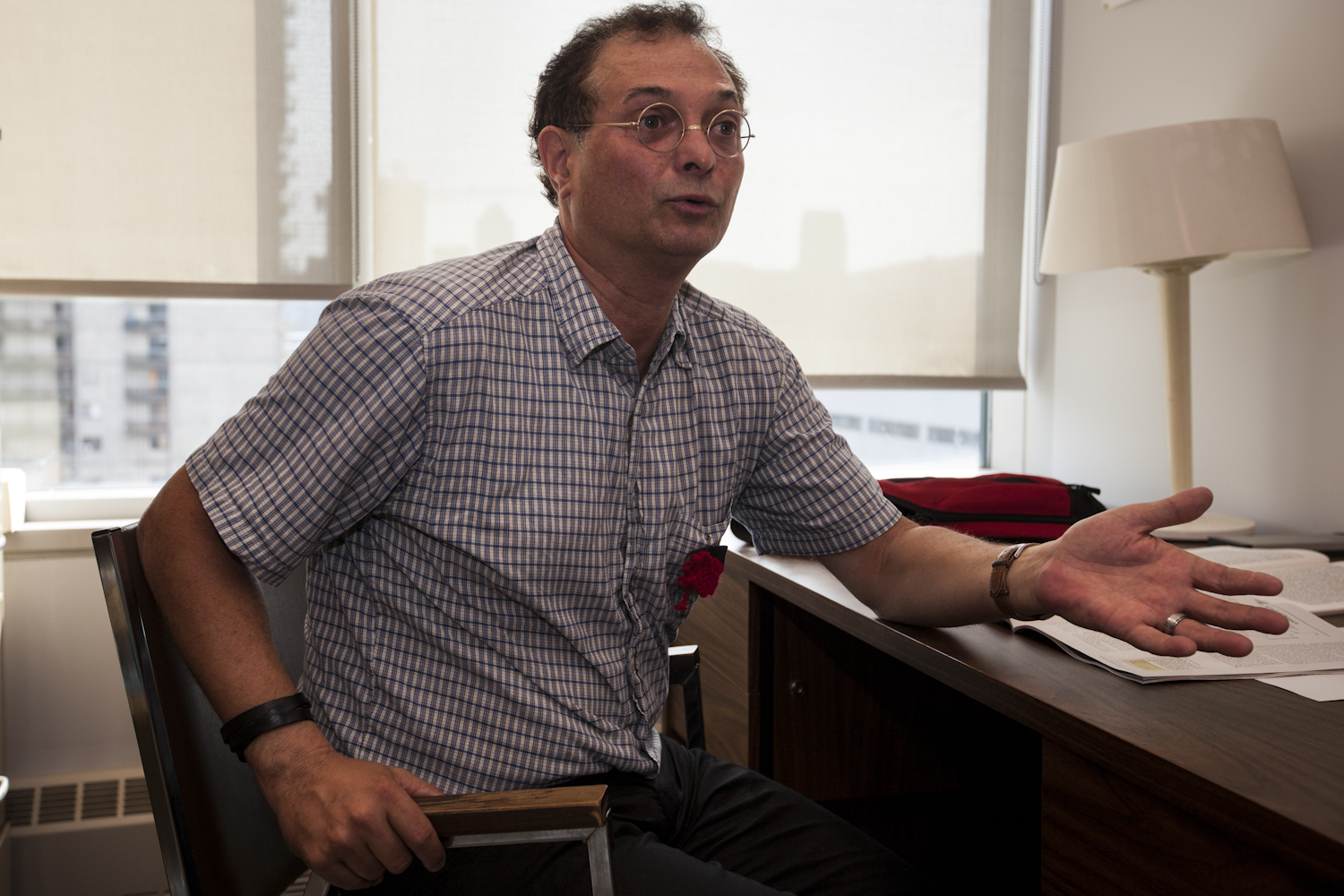On the eve of the Quebec election, rabble.ca is proud to showcase profiles of nine individuals amongst the hundreds of thousands who have proudly worn the red square of solidarity with the historic Quebec student strike.
Contrary to the wishes of Quebec’s establishment, tomorrow’s vote, regardless of the result, will not mark the end of what has come to be known as the Maple Spring. The impact and the inspiration provided by Quebec’s carrés rouges, which has spread all across Canada and even around the world, will long outlast Jean Charest.
Journalists Jane Gatensby and Nicolas Quiazua compiled these profiles over several weeks this summer. We will feature them throughout today and tomorrow, Labour Day and Election Day in Quebec.
*
“I wear a red square and a black one”, says professor Normand Baillargeon, speaking to us from his office at UQAM’s education department. “I added the black square when I saw the government intervene in such a brutal way — during the negotiations, through police intervention, and in adopting la loi spéciale.”
Baillargeon specializes in the philosophy of education, and has published a wide variety of books on philosophical and societal topics, including 2011’s Je ne suis pas une P.M.E., in which he pleads for the preservation of the public university.
“Enrollment in higher education in Quebec, in cegep and even more so in university, is a recent and fragile gain. I think it’s something worth preserving, and I think that raising tuition threatens access to education in a dramatic way.” To him, however, the student movement is about more than accessibility.
“The strike [was] a challenge to a certain model of society […] where the alliance between the state and private enterprise has tried to impose a certain number of dominant values on society- including in the university, and on education.”
When Baillargeon talks about the movement, he rarely speaks in terms of electoral prospects or famous figures. Instead, the self-proclaimed anarchist uses language like “structures of power” and “conditions necessary for social change”.
“When the student movement used real pressure tactics, we saw change, and we also saw institutional power resist […] it wasn’t long before the police were extremely present in the streets of Montreal, it wasn’t long before a special law was put in place. Yes, change can be brought about by reformist politics, but typically, change happens when people mobilize, fight.”
He says he’s “extremely proud” of his students for carrying out a “truly admirable” strike. “Us older activists have nothing to teach them,” he adds.
“My students will vote next week on whether or not to return to class. If my students decide not to go back, neither will I”.
But what about the penalties he could face under Law 12? “I am incapable of considering breaking a student picket line,” he says. “I’m very happy to be a professor right now, I would have hated not being here for this.”
Baillargeon sees the hikes as an immediate threat, but is also worries about the “transformation” taking place in Quebec’s universities. He describes to us UQAM’s shift towards private-sponsored research, its move away from the liberal arts in favor of business studies, and its focus on expansion, as seen in the disastrous Ilot Voyageur project; examples, he says, of how the university is losing its way. “The students were aware of this very early, and they brought that debate to the public arena,” he says. He is furthermore impressed with the movement’s incorporation of anarchist politics.
“There were authentic elements of anarchism in the student movement, [of] economic democratization. I think that we’ve seen [anarchism] gain popularity over past years, and I think that the student movement is making new adepts.”
Is there a conflict between being an anarchist and calling for more state involvement in education? “Of course!”, Baillargeon says. “but I think that […] we have long-term objectives, and then we have immediate goals”. He goes on to say that a social awakening needs to happen before the “cage [of government] can be opened”. “For now, we need to start by enlarging the surface of the cage from within […] there are bigger beasts on the outside.”
Citing the example of anarchism in Spain, Baillargeon explains that social change only happens after years of background work. “A boy or girl in black going out into the street to break windows, people don’t even know who they are! It goes back to the conditions for social change, it takes people mobilizing, getting together, learning together, working for a very long time, and we haven’t gotten there yet.”
But didn’t this spring constitute an awakening, a first step? “I think it will leave its traces. But we can’t ask our young people, 18-22 year-olds, to carry the weight of a social struggle by themselves. What we’re seeing now would have been completely different had we had 20 or 25 years of mobilization, of community support behind us,” the professor concludes.
*
Jane Gatensby is a news reporter for The McGill Daily and a contributor to Ceasefire Magazine. Nicolas Quiazua is Editor-in-Chief at Le Délit.
The interview for this profile was conducted in French and translated by Jane Gatensby.
Photo by Nicolas Quiazua.




